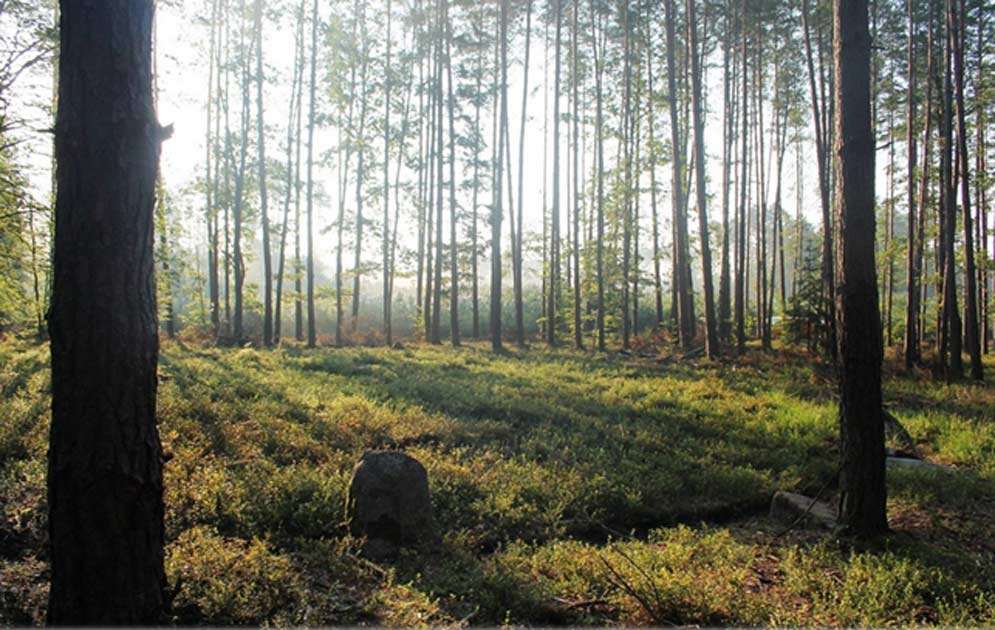A Polish Stonehenge? Discovery of New Burial Mounds May Rewrite History
A group of previously unknown burial mounds has been discovered near Czaplinek in north-western Poland. The most interesting feature found so far is a stone ring, which is shaped similar to the world-famous site of Stonehenge. The complex sheds a new light on the history of these lands.
The team of Polish archaeologists from the Koszalin city museum unearthed a complex in an area previously known to have had an Iron Age site. According to RMF24.pl, the team of researchers found an urn burial with cremated remains inside. Apart from this, several precious artifacts were discovered inside the urn, including a bronze buckle, bone pin, and a clay spindle whorl - which allowed them to conclude that the burial contains a woman’s ashes.

The first artifacts from the site. (Muzeum w Koszalinie)
The site also contains burial mounds which were enclosed with stone rings. The researchers claim that the rings may be similar to the sequence of stones used in Stonehenge – with larger stones connected with a row of smaller ones.
- Polish Pyramids: Ruins of Megalithic Tombs from the Time of Stonehenge Discovered in Poland
- Mysterious medieval fortifications buried in Poland detected with advanced imaging technology
The large stones were overturned through the ages, but it is still possible to find their original location. Archaeologists were able to identify the layout of the stone ring with the large stone in its center. The scientists believe that it was a place for religious ceremonies and ritual burials. The mounds were dated back to a period between the 1st and 3rd centuries AD.

The mound under investigation near Czaplinek. (Muzeum w Koszalinie)
The complex near Czaplinek is one of a few big complexes of mounds and megaliths in Poland. One famous complex is located in Odry, a small village in Pomerania in the north of Poland. This location became famous with the discovery of the second biggest site of stone circles in Europe. It is also known to be the home of at least 600 Neolithic burials. The site was discovered in 1915 by Paul Stephan, who identified various stellar alignments on the assumption that the construction dates back to the 8th century BC.
Archaeologists still debate the origins of the huge burial center amongst the Odry stone rings. It is difficult to agree upon one explanation for the stone circles’ roots. It is also almost impossible to find out how old the constructions discovered in Odry really are. It is known that the area was settled by the Goths at one point in time, but the earlier history of the region has never been confirmed.
- Long Hidden Scythian Treasure Site Located at Ceremonial Spring in Poland
- The Nazi Temple of Pomerania: Exploring the Mysterious Odry Stone Circles
For many centuries, these kinds of places were damaged in Poland. The worst devastation took place during the 19th century, when people destroyed old kurgans (prehistoric burial mounds or barrows), stone circles, and other Neolithic constructions to prepare farmers’ fields. Thus, it is not surprising that most of the Neolithic sites that have been found are located in the forest. It could be said that the caring tree roots saved them and protected them over the centuries.
This is another discovery of megalithic tombs made in Poland this year. During the last few years, every few months has brought a new discovery. For example, Natalia Klimczak reported on March 2, 2016 for Ancient Origins that more than a dozen monumental megalithic tombs were discovered in Western Pomerania in Poland. Because of the enormous character of the structures, they are often called the ‘Polish pyramids.’ The site is located near Dolice, Western Pomerania. She writes:
“The ground structures were made in a shape of an elongated triangle, surrounded by big stone blocks. The structures stood 3 meters (9.8 feet) tall, and were 150 meters (492.1 feet) long, and 6-15 meters (19.7-49.2 feet) wide. The place where they are located is difficult to examine. The surface is covered by an old forest. On small sites archaeologists have discovered fragments of pottery and other artifacts. The tombs were created by the Funnel Beaker Culture community which lived on the land from the 5th to the 3rd millennium BC.”

An example of a Funnel Beaker Culture Dolmen (single-chamber megalithic tomb) in Lancken-Granitz, Germany. (Skäpperöd/CC BY SA 3.0)
In that discovery “the mounds contain single burials. According to the researchers, the people who were buried in the tombs were important elders of the tribe. Other information may be available after the researchers summarize more data and explore the sites further. Until now, the research has been based on non-invasive methods.”
Top Image: Part of the recently discovered site in Czaplinek, Poland. Source: Muzeum w Koszalinie


















